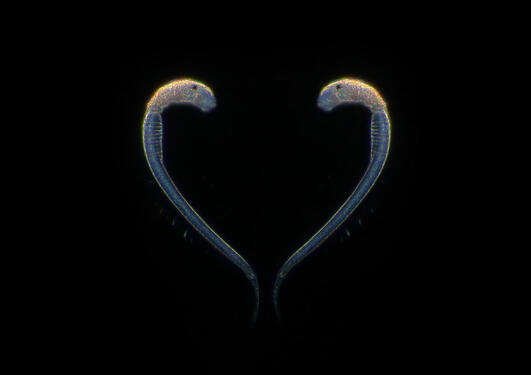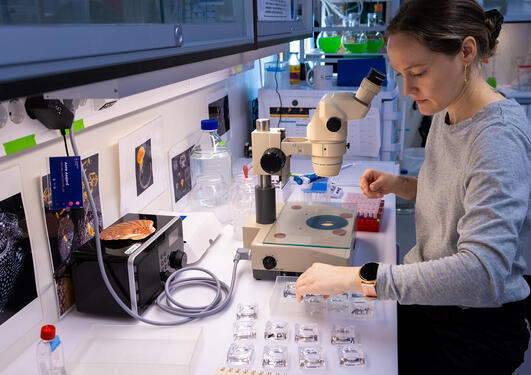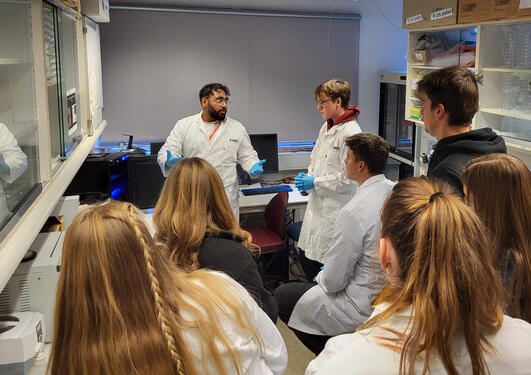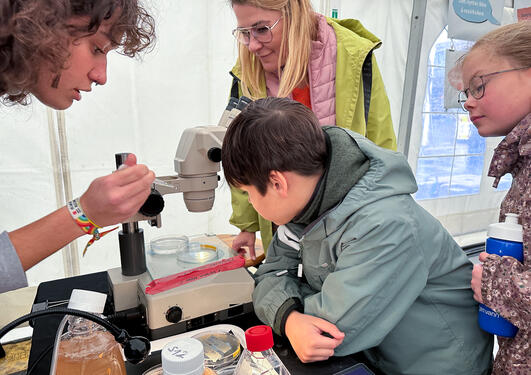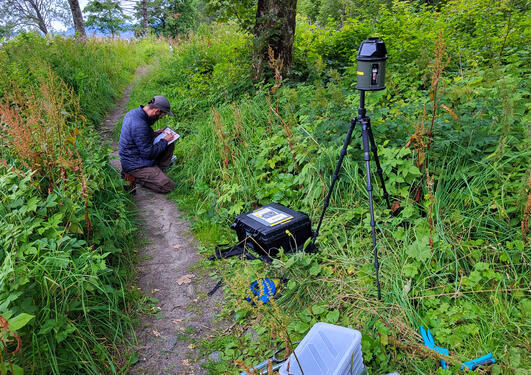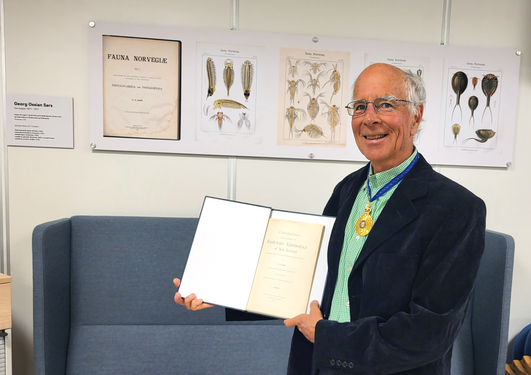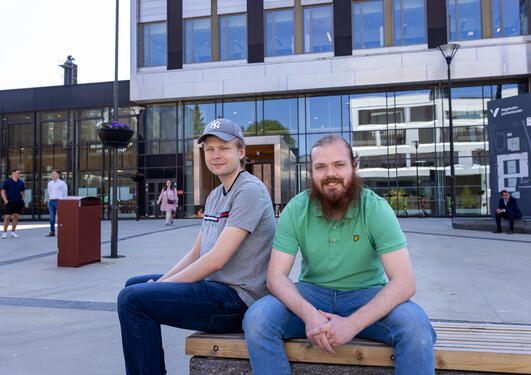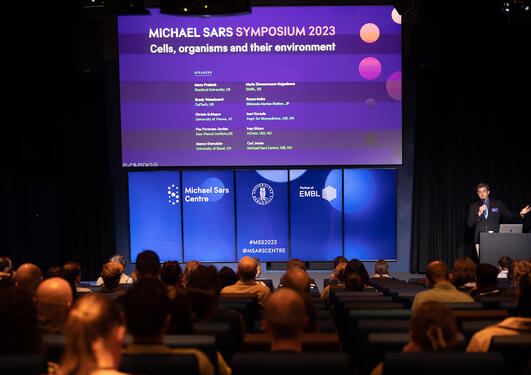News archive for Michael Sars Centre
A recent study provides insights into how iGluRs function and reveals an unexpected role of GABA in excitatory signaling in invertebrates.
Parasitic flatworms undergo drastic changes throughout their life cycle, including a rewiring of their nervous systems. A new paper explores the molecular mechanisms underlying this remarkable feature.
On the 15th of December 2023, PhD candidate Ronja Göhde successfully defended her thesis titled: “Secretory vesicle protein homologues in choanoflagellates”.
The Appendicularian Facility at the Michael Sars Centre at the University of Bergen is one of only four in the world. This month, guest researchers traveled from the U.S. to conduct experiments in this unique laboratory.
Students from the Nature program specializing in wilderness studies at Voss vidaregåande skule (VGS) experience a molecular biology laboratory for the first time.
We cordially invite you to join us in Bergen, Norway from Tuesday 28th until Friday 31st May 2024!
On the 28th of September 2023, PhD candidate Mowgli Dandamudi successfully defended his PhD thesis titled: “Development of chemogenetic tools from invertebrate ion channels”.
The annual science festival creates enthusiasm and understanding for research through local educational and research institutions. Held every year since 1995, it is one of Europe's largest, nationwide research festivals.
A beautiful new film by the Tara Ocean Foundation showcasing researchers from both Tara and the Michael Sars Centre sharing their knowledge and scientific practice during the EMBL TREC expedition stopover in Bergen. (French with English subtitles)
Guest researcher and former postdoctoral fellow at the Michael Sars Centre, James Gahan, will use his European Research Council (ERC) Starting Grant to establish his own research group at the University of Galway, Ireland.
Understanding the neural control of movement and how it evolved is critical to better address neurodegenerative diseases. In a recent study, researchers discovered that neuronal networks controlling movement in humans and tunicates have the same building blocks, structure, and function.
Traversing European Coastlines (TREC) is a continent-wide expedition addressing environmental challenges along the coasts of Europe. On their northernmost stop, the team was based at the Espegrend Marine Biological Station, hosted by the University of Bergen.
Members of the Michael Sars Centre had the exclusive opportunity to visit the research vessel Tara on Friday while the schooner was in Bergen for samples, supplies, and fuel. Afterwards, Tara researchers visited the Centre for a reciprocal tour of our marine facilities.
Over the past ten months, research groups at the Centre welcomed five incredibly enthusiastic and motivated bachelor students from HU University of Applied Sciences, Utrecht for their first internship experience.
Curious to learn more about Georg Ossian Sars, with whom he shares a prestigious honor, Professor Fellows enjoyed a visit of our facilities with genuine curiosity and a visible sense of wonder.
Thanks to the work of two HVL intern bachelor students, the Chatzigeorgiou lab can now enjoy a new automated system to modulate gene expression in Ciona using light.
On the 9th of June 2023, Paula Miramón-Puértolas successfully defended her PhD thesis titled "Mesenterial adult stem-like cells as a potential source of germinal and somatic lineages in a sea anemone".
For the second edition of the Michael Sars Symposium, 120 attendees joined us at Media City Bergen for a day filled with inspiration, information, and insights celebrating marine science.
Pages
- December 2025 (2)
- October 2025 (2)
- September 2025 (2)
- August 2025 (1)
- July 2025 (1)
- June 2025 (2)
- May 2025 (2)
- April 2025 (2)
- March 2025 (1)
- February 2025 (4)
- January 2025 (4)
- December 2024 (1)
- November 2024 (2)
- October 2024 (6)
- September 2024 (2)
- August 2024 (4)
- July 2024 (2)
- June 2024 (3)
- May 2024 (2)
- April 2024 (4)
- March 2024 (2)
- February 2024 (3)
- January 2024 (1)
- December 2023 (2)
- November 2023 (1)
- October 2023 (3)
- September 2023 (3)
- August 2023 (4)
- July 2023 (1)
- June 2023 (3)
- May 2023 (2)
- April 2023 (3)
- February 2023 (3)
- January 2023 (2)
- December 2022 (1)
- November 2022 (1)
- October 2022 (1)
- September 2022 (2)
- August 2022 (1)
- June 2022 (1)
- March 2022 (2)
- January 2022 (1)
- December 2021 (1)
- November 2021 (1)
- April 2021 (1)
- March 2021 (1)
- October 2020 (2)
- August 2020 (1)
- June 2020 (1)
- April 2020 (2)
- March 2020 (1)
- October 2019 (1)
- August 2019 (1)
- June 2019 (1)
- April 2019 (1)
- February 2019 (1)
- January 2019 (2)
- February 2017 (1)

